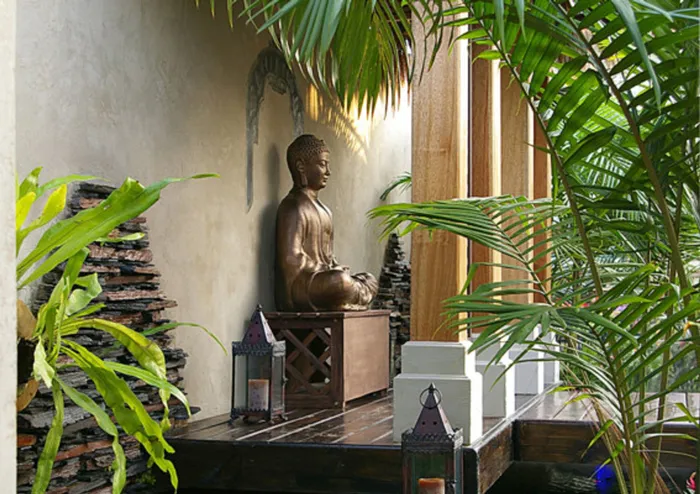Revitalise indoor plants

ZEN-LIKE: Create a relaxation corner with bamboo palms and a variegated yucca. ZEN-LIKE: Create a relaxation corner with bamboo palms and a variegated yucca.
Winter has arrived with all its icy cold winds and freezing nights. Although pansies, calendulas and fairy primrose are now thriving in the cold, it is worth taking a look at your indoor living spaces and revitalising your indoor plants.
Experienced gardeners will tell you that if you want a great indoor garden this winter, follow the three golden rules of indoor gardening: replenish, repot and replace. Follow these guidelines this weekend.
Replenish
Start by cleaning the leaves of your indoor plants and checking their water requirements. In the course of a year, indoor plants collect dust which can block the leaf pores. Make sure that the dust is removed from the top and bottom of the leaves. For small indoor plants, put them in a bath or shower and give them a gentle spray of lukewarm water. For larger plants, a warm wet cloth will do the job.
Most people are unaware that overwatering is the main reason why indoor plants fail. Keeping a plant saturated with water is tantamount to killing it with kindness. So, how often should you water your indoor plants? The generally accepted advice is that a plant should be allowed to become moderately dry between waterings.
Water your indoor plants thoroughly every 10 days rather than give them a little water every few days. A little water only penetrates the top few centimetres of soil and will rarely get down to the roots. A good watering will reach all the roots and benefit the plant in the long term. In winter, reduce the watering schedule of indoor foliage plants as they go into a semi-dormancy in midwinter, but never let them become bone dry. The best time to water plants is in the morning when they still have the daylight hours to use the water. How to water is as important as when. The first rule is never use cold water – especially in cold weather. Use tepid or lukewarm water. Your plants will absorb it more easily, and it will not send them into a state of shock.
Repot
Take a good look at your indoor plants. Are roots growing out of the base of the pot? Are the new leaves on the plant smaller than the existing leaves? Does the plant dry out quickly? If the answers are “yes”, your plant needs a larger home. An average size indoor plant will need a new pot that is 5cm wider and deeper than the original. Smaller plants will need a pot one size larger – usually an increased diameter of 2cm. Avoid the temptation of buying an enormous new pot. The roots of the plant will flounder and it will not be comfortable.
Before moving any plants, wet the soil slightly so the plant will slip out easily. Untwist matted roots with a fork, and trim twisted roots. Layer the base of the new pot with pebbles for drainage, fill in the sides with potting soil, and water thoroughly. Commercially produced potting soil for indoor plants is sold at all garden centres.
Replace
In reality, there is no such thing as an “indoor plant”. All plants are meant to grow outdoors, but some are naturally adapted to similar conditions. Generally speaking, plants that prefer shade will do quite well indoors, but some will not grow well in stuffy or dark corners.
The level of light in a room is the biggest limiting factor indoors. A zone of 2m away from a window is deemed to be bright light. However, beyond 2m away from the window, it is already much darker. Natural light is at its lowest far from windows or in rooms with small windows such as bathrooms.
Orientation is another factor to consider. A north-facing room generally has quite good light, but a south-facing room is rather dark, even near the windows. East-facing rooms get cool, morning sun and west-facing windows get very hot afternoon sun. Knowing where the plant is to grow, and what the light-levels are in a room, decides your success in choosing the right plant.
As part of your revitalisation strategy this month, move plants which are struggling in areas of low light on to a bright patio. Accept that dark passageways are not a good place for plants and find more suitable décor. Identify empty corners that have enough light to sustain plant life and fill them. There are a range of indoor foliage plants for areas of high, medium and low light. Choose the right type of plant for the spot.
If you are looking for colour, choose from the range of winter flowering indoor plants. Appreciate that most flowering plants do best in bright light. Try cymbidiums, cineraria, cyclamen, poinsettias, chrysanthemum or begonia. A corner of indoor colour will revitalise any bleak week this winter. - Saturday Star